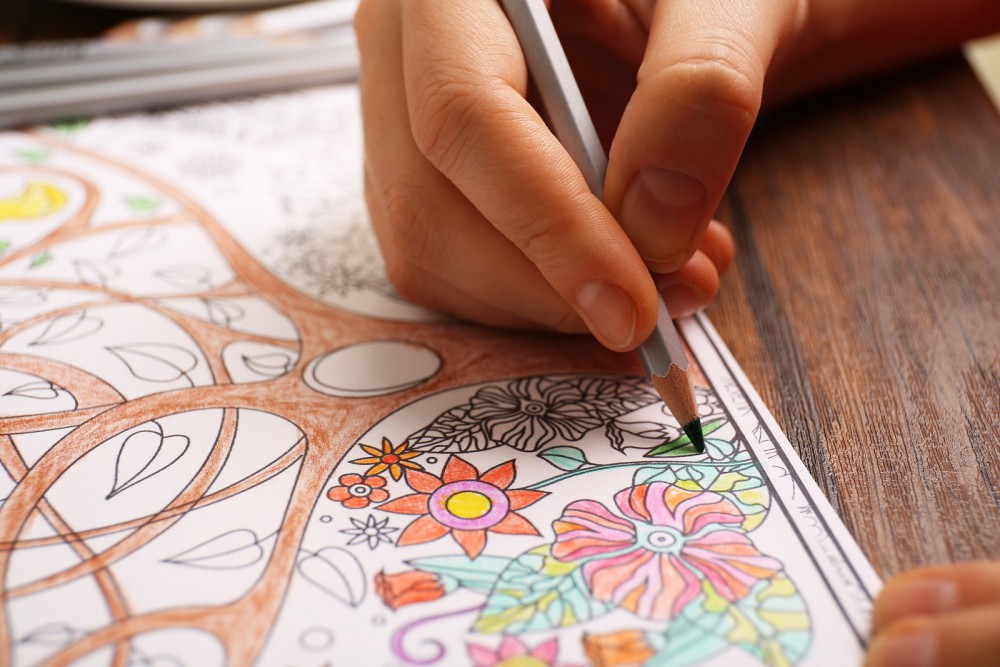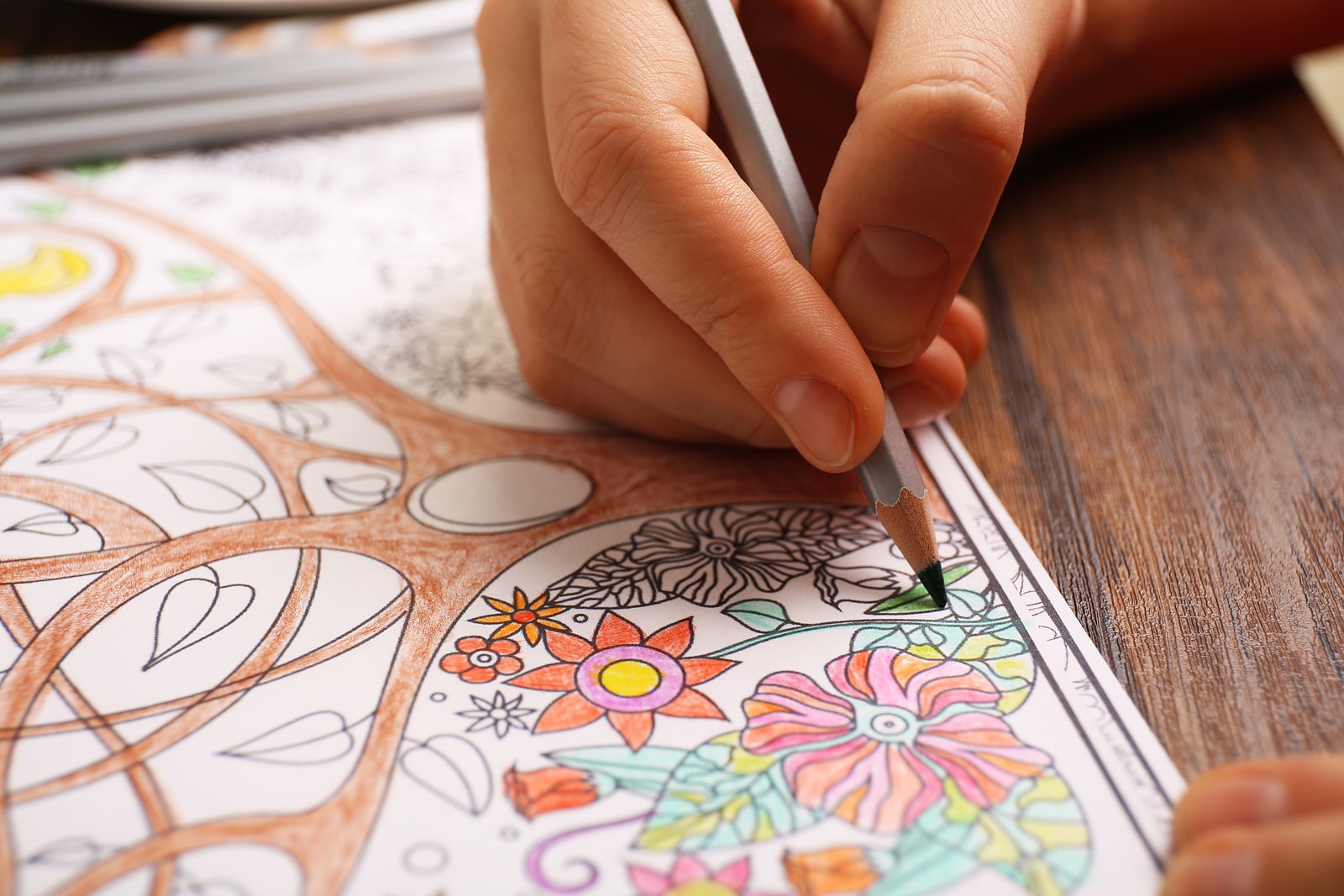
Would you like three free coloring pages? Enter your name and email address below and we’ll send them straight to your inbox!
When’s the last time you opened a fresh pack of crayons and spent a few minutes with a coloring book? Has it been years? Decades?
On the contrary. If you’re an American adult, there’s a good chance your answer is weeks or even days.
Psychological research in 2005 discovered that when adults engaged in coloring geometric shapes, their anxiety levels dropped by a significant amount. Fast-forward a handful of years to 2012. By then, adult coloring books had started a quiet trend. Other researchers began taking note, and sales of these coloring books were rising.
The trend didn’t stay quiet for long. It’s in full-swing right now, and it’s gained so much popularity, that Crayola, the popular crayon company, debuted a trio of adult coloring supplies at the end of 2015 – markers, colored pencils and coloring books.
There are over 3,000 adult coloring books for sale on Amazon – a few even show up on the bestseller list. Booksellers are struggling to keep them on the shelves. Publishers are endeavoring to meet the rising demand. It’s a craze that doesn’t seem to be going anywhere, but is there real psychology behind this trend?
Are coloring books really good for your mental health?
The Science Behind It
Health benefits? From coloring? It sounds a little too simplistic to be true, but there’s one caveat worth mentioning – these aren’t the same coloring books you paged through in kindergarten. These books don’t test your ability to stay inside lines or to use appropriate colors. Instead, they are page after page of intricate and complex designs. They are designed to keep you coloring on the same page for extended periods of time.
You Might Also Enjoy: Psychiatric-Mental Health Nurse Job Description
Suzanne Stock, a Business Development Manager for Barnes & Noble, said the books can benefit people of all ages. “It does help you develop some fine motor skills that perhaps we’ve lost a little bit with the technology age,” she said.
Clinical social worker Sandie Fox sees mental health benefits to coloring.
“A number of my clients have said there is a very calming effect,” she said. “You focus, you’re doing something constructive, even creative, because the choice of colors is all up to the person. It helps to de-intensify traumatic material, and even anxiety if the person is just kind of anxious and depressed but doesn’t have any major trauma.”
It’s No Substitute for Therapy
There are numerous benefits to being creative, and this adult coloring craze capitalizes on advantages like stress reduction, improved attention span and improved cognitive abilities. It is not, however, a replacement for therapy.
Cathy Malchiodi, PhD., argued that coloring is simply an escape from the here-and-now. It’s not mindfulness meditation, it’s not creative expression and it’s not therapy. It’s just moving a crayon or pencil back and forth.
Duly noted. But she doesn’t dispute the relaxing and enjoyable nature of the hobby. Therapy or not, there’s a mind-numbing stillness to coloring, one that helps us forget our phones, our emails and our day-to-day responsibilities for a little while.
At worst? You haven’t replaced years of counseling, but maybe you’ve taken a little time for yourself and created something new. At best? You’re reliving a childhood pastime while significantly improving your mental health.
Either way, don’t wait another decade to crack open a coloring book. You loved them once. See what your five-year-old self was so excited about.
Don’t forget to enter your information below for three free coloring pages!









